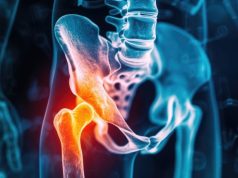However, likelihood of urge urinary incontinence increased with early adulthood history of competitive sports
By Elana Gotkine HealthDay Reporter
MONDAY, Feb. 13, 2023 (HealthDay News) — The association of physical activity (PA) with pelvic floor disorders (PFDs) has been examined, with no link identified between PA in middle age and symptoms of PFDs, according to a study published online Jan. 19 in BJOG: An International Journal of Obstetrics and Gynaecology.
Mari A. Kuutti, from the University of Jyväskylä in Finland, and colleagues conducted a cross-sectional observational study with retrospective PA assessment in a population sample of 1,098 47- to 55-year-old Finnish women. The associations of early PA (at age 17 to 29 years) and current PA at middle age were examined along with symptoms of PFD, including stress urinary incontinence, urge urinary incontinence, fecal incontinence, constipation or defecation difficulties, and a feeling of pelvic organ prolapse.
The researchers observed no independent association for current PA with symptoms of PFDs. The likelihood of urge urinary incontinence — but not symptoms of stress urinary incontinence, fecal incontinence, constipation or defecation difficulties, or pelvic organ prolapse — was increased for middle-aged women with an early adulthood history of competitive sports (odds ratio, 2.16). The likelihood of experiencing fecal incontinence, but no other symptoms of PFDs, was increased for women with a history of regular PA (odds ratio, 4.41).
“Pelvic floor disorders can be prevented and rehabilitated; therefore, there is no need to be shy when seeking professional help,” a coauthor said in a statement. “Exercising according to a personalized exercise program made by a physiotherapist is safe and effective.”
Abstract/Full Text (subscription or payment may be required)
Copyright © 2023 HealthDay. All rights reserved.








